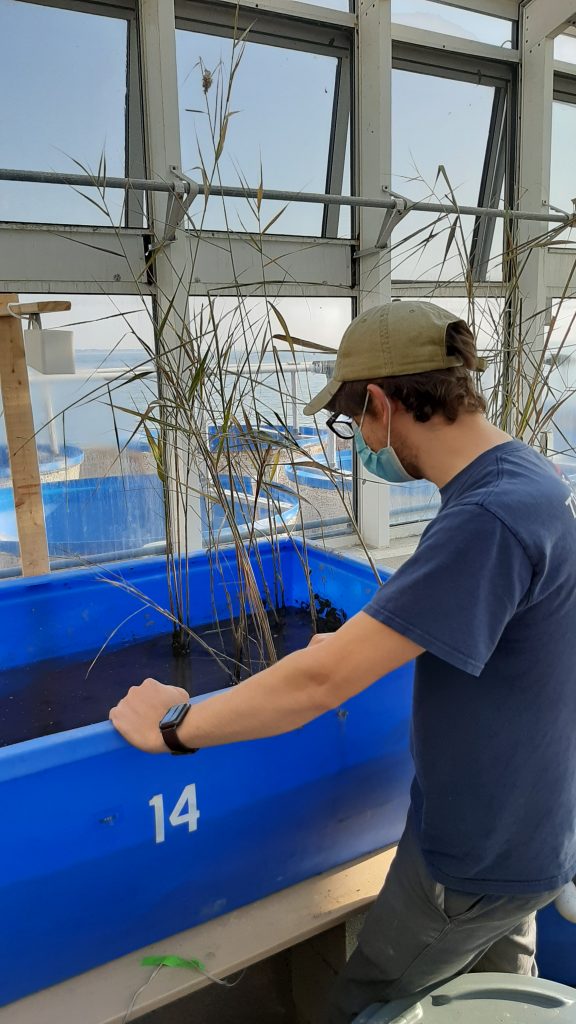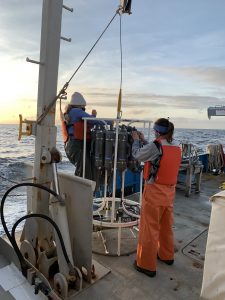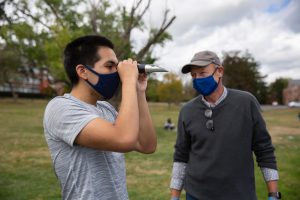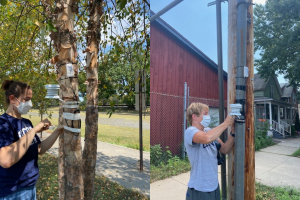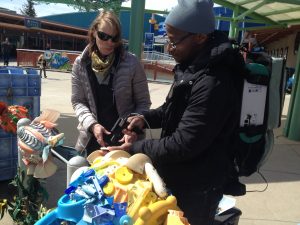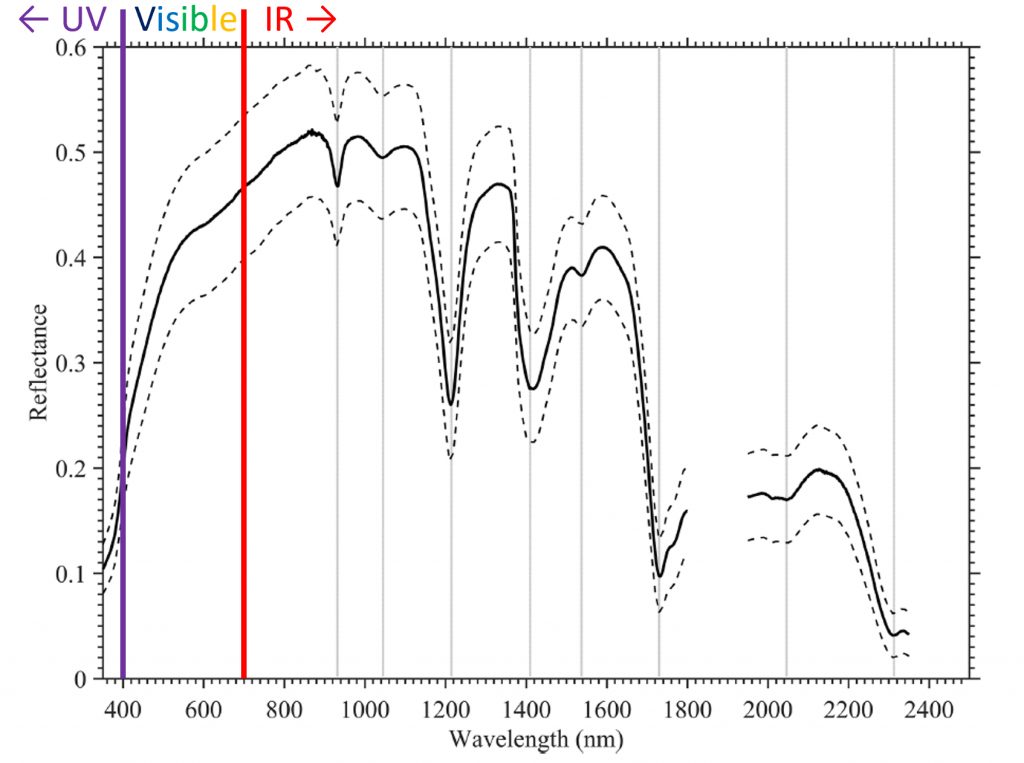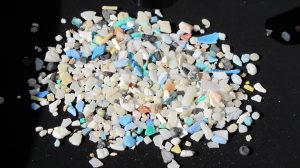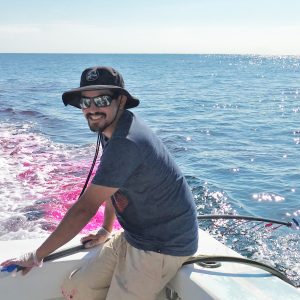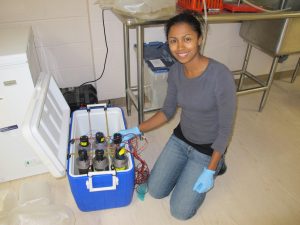There have been many achievements in our department in the past months! Here are highlights of recent awards, grants, and publications in the Department of Marine Sciences from April 2020 through October 2020.
| Awards | Description |
|---|---|
| Prof. James O’Donnell | O’Donnell was appointed to the Governor’s Council on climate change, and now serves as the co-Chair of the Science Subcommittee. Co-authored two draft interim reports. |
| Prof. Pieter Visscher | Visscher was appointed to the executive committee of the Australian Centre for Astrobiology. |
| Prof. Cesar Rocha | Rocha received the Editors’ Citation for Excellence in Refereeing for Geophysical Research Letters from the American Geophysical Union (AGU). |
| Kayla Mladinich (grad student, Prof. J. E. Ward) | The Ruth D. Turner Foundation awarded Kayla Mladinich the Ruth D. Turner Fellowship for her project titled “Evaluating bioindicator Species of Microplastics in the Marine Environment: A Comparison of Bivalves, Gastropods, and Tunicates.” |
| Halle Berger (grad student, Prof. Catherine Matassa and Prof. Samantha Siedlecki) | Berger was placed with the NOAA OAR Ocean Acidification Program and NOAA NOS National Centers for Coastal Ocean Science Competitive Research Program as their coastal stressors (ocean acidification and harmful algae blooms) program coordinator as part of the 2021 Knauss Marine Policy Fellowship Program. |
| Grants | Description |
|---|---|
| Prof. Heidi Dierssen | Dr. Dierssen was recently awarded a large NASA grant for an interdisciplinary project with colleagues at Rutgers University and University of Colorado exploring the uptake of carbon dioxide in a rapidly changing oceanic region near the West Antarctic Peninsula. Specifically, she will lead the team evaluating linkages between sea ice, mixed layer depth, optical properties, carbon export and other biogeochemical and physical parameters on phytoplankton biomass, community composition, and productivity. |
| Prof. Hans G. Dam | Linking eco-evolutionary dynamics of thermal adaptation and grazing in copepods from highly seasonal environments. National Science Foundation, $531,434. The grant tests how warming oceans changes the feeding habits of the most abundant animals on Earth, copepods. |
| Publications | Description |
|---|---|
| Prof. Pieter Visscher | Dr. Visscher presents two new publications on arsenic cycling in the preoxygen world, based on research in 2.72 billion year old rocks and modern microbial mats in the Atacama Desert (Chile). This groundbreaking work has been featured in multiple online articles, radio, television, and newspapers. (Modern arsenotrophic microbial mats provide an analogue for life in the anoxic Archean) (Evidence for arsenic metabolism and cycling by microorganisms 2.72 billion years ago) |
| Prof. James O’Donnell | Dr. O’Donnell and colleagues worked on a collaborative project to model storm surge and wave heights for flood risk assessments. This project yielded an interactive map on the CIRCA website: The Connecticut Costal Towns Storm Annual Exceedance Probability/Return Interval Viewer. (Estimating the Annual Exceedance Probability of Water Levels and Wave Heights from High Resolution Coupled Wave-Circulation Models in Long Island Sound) |
| Prof. Robert Mason, Assistant Prof. Zofia Baumann, and Gunnar Hansen (grad student) | Sediment, water, forage fish and invertebrates were collected and analyzed for mercury forms from sites in the Still River, CT that had been impacted by mercury pollution from hat making in Danbury in the late 19th/early 20th century as well as from unimpacted sites to examine the legacy of this contamination. (Evaluating the impacts on local fish from the eastern United States) |
| Prof. Heidi Dierssen | Dr. Dierssen published a new remote sensing method with colleagues from the NASA CORAL project in Remote Sensing of the Environment for classifying shallow seagrass and benthic algae habitats and simultaneously characterizing the water column properties including phytoplankton concentrations. (Benthic classification and IOP retrievals in shallow water environments using MERIS imagery) |
| Prof. Hans G. Dam and Postdoc Matt Sasaki | Recent publication showing that genetic adaptation is important to predict how animals cope with the ongoing ocean warming. (Genetic differentiation underlies seasonal variation in thermal tolerance, body size, and phenotypic plasticity in a short-lived copepod) |
| Prof. Hannes Baumann | Recent publication showing that oxygen consumption in fish embryos, but not larvae, is affected by acidified water conditions. (Synergistic metabolic responses of embryos, but not larvae, of a coastal forage fish to acidification and hypoxia)
Recent publication showing that fish grow up smaller under acidified water conditions, but these effects do not differ between males and females. (Are long-term growth responses to elevated pCO2 sex-specific in fish?) |
| Prof. Cesar Rocha | Working on the problem of horizontal convection, Rocha and collaborators discovered a mathematical identity that relates the horizontal buoyancy flux (or heat flux) to the molecular dissipation of buoyancy (or temperature) variance. This new identify justifies the definition of a horizontal-convective Nusselt number in analogy to the Nusselt number of the more widely studied Rayleigh-Bénard convection. (The Nusselt numbers of horizontal convection) |
| Yipeng He (grad student, Prof. Robert Mason) | During a research cruise from Alaska to Tahiti, samples were collected for determining the concentrations and forms of mercury in the atmosphere. Two methods were compared in the paper as there has been controversy over the accuracy of one of the methods. (Comparison of reactive gaseous mercury measured by KCl-coated denuders and cation exchange membranes during the Pacific GEOTRACES GP15 expedition) |
| Tyler Griffin (grad student, Prof. J. E. Ward) | Recent publication comparing and discouraging the use of fecal sampling as a substitute of gut samplings for the blue mussel. (Direct Comparison of Fecal and Gut Microbiota in the Blue Mussel (Mytilus edulis) Discourages Fecal Sampling as a Proxy for Resident Gut Community) |
| Prof. Senjie Lin | Visiting scholars in Lin Lab Tangcheng Li and Hongfei Li recently published papers with Professor Senjie Lin in Science in the Total Environment about how a harmful algal bloom dinoflagellate and a coral endosymbiont dinoflagellate cope with nitrogen-nutrient deficiency and about tolerance of ammonium toxicity. (Transcriptome profiling reveals versatile dissolved organic nitrogen utilization, mixotrophy, and N conservation in the dinoflagellate Prorocentrum shikokuense under N deficiency) |
